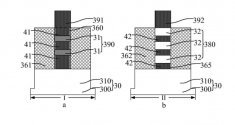Copium. It just takes one day for Taiwanese to come up with all these talking points. I have seemed many of these same kinds of comments all over forums in Hong Kong, mainland China and Taiwan.
People familiar with the matter answered a series of questions about Huawei's Kirin 9000S mobile processor in a question-and-answer manner.
1. Is this the first time SMIC uses this process technology?
No, SMIC will help a domestic mining machine ship 7nm chips in 2021, and this time it will help Huawei with the same generation (N+2) process technology.
2. Is the Kirin 9000S manufactured using domestic lithography exposure equipment this time?
No, the DUV lithography exposure equipment used by ASML in the Netherlands is the same as the contemporary TSMC lithography exposure equipment, without any localization.
3. Is the Kirin 9000S produced by Huawei's own production line this time?
Totally wrong. Huawei is building its own production line, and even building its own lithography exposure equipment, but these are all very distant things.
At present, Huawei is in the stage of building its own non-beautification production line (that is, the acquisition of Nikon lithography exposure equipment that has been eliminated for many years), and Huawei's self-made lithography exposure equipment is very far away, at least 5 to 10 years before there will be a stage news.
4. Is the Kirin 9000S produced by SMIC's self-built non-beautification production line this time?
No, even if SMIC gets the Nikon lithography exposure equipment, it is impossible to make a 5nm (N+2) chip like the Kirin 9000S. This is an error in the physical principle.
5. Since ASML’s DUV film exposure equipment has been used for a long time, why can SMIC suddenly manufacture Kirin 9000S for Huawei?
Because this year, Biden and the White House Department of Commerce made a decision to allow SMIC to provide a license to manufacture 5nm chips for Huawei.
According to previous media reports, sufficient production capacity and stocking will be achieved by the end of this year. However, when the yield rate was low and the output was insufficient, Huawei directly produced mobile phones and released them offline, which caused today's shock.
6. Can SMIC continue to make breakthroughs in process technology and carry out 4nm-level chip foundry?
It is impossible at present, because it is necessary to purchase a large amount of ASML's EUV shadow exposure equipment, but at present, the sale of this shadow exposure equipment is completely banned by SMIC, so the current Kirin 9000S is what SMIC can achieve in the next 5 to 10 years. the best process technology.
Unless SMIC is lifted the ban on EUV shadow exposure equipment, or the White House licenses ASML to sell EUV shadow exposure equipment to SMIC, SMIC can only optimize "N+3", "N+4" and so on on the current basis.
7. Does Shanghai Microelectronics (SMEE) have the opportunity to develop EUV shadow exposure equipment?
impossible.
8. Will ASML sell photo exposure equipment to Huawei's self-built production line?
impossible.
9. Are there any other de-beautification solutions to help Huawei OEM?
Likelihood is 0.


